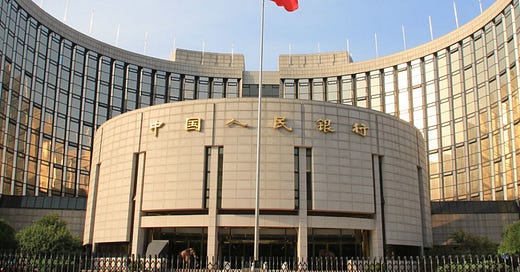Officials of the Central Bank of China detail new regulatory trends on cryptocurrencies
Author:Pengpai
On November 26, Gou Wenjun, Director of the Anti-Money Laundering Monitoring and Analysis Center of the People’s Bank of China, stated at the 2021 First Lujiazui National Financial Security Summit and the 11th China Anti-Money Laundering Summit that virtual assets can satisfy some people’s privacy, currency trust, and wealth appreciation. At the same time as demand, its decentralization, anonymity, and borderless characteristics, coupled with the capital control and anti-money laundering compliance requirements faced by cross-border payments, are widely used in extortion, drug trafficking, gambling, money laundering, terrorist financing, and tax evasion. , Cross-border transfer of funds and other illegal transactions.
Gou Wenjun pointed out that because the issuance of virtual assets has no physical basis, it has also been reduced to a convenient tool for illegal financial activities such as illegal fund-raising, pyramid schemes, and fraud. With the expansion of the scale of virtual assets and the increase of participants, their coupling with the financial system continues to increase, breeding underground economic activities. In recent years, there have been a large number of illegal and criminal cases of using virtual assets at home and abroad, posing new and serious threats to investor rights, economic order, and financial security.
"As virtual assets, especially virtual currencies, pose increasingly serious challenges to national currency sovereignty, anti-fraud, anti-money laundering, and anti-terrorist financing, international organizations and governments are strengthening the supervision of virtual assets." Since 2013, a series of laws and regulations of China have been promulgated successively, denying the legality of virtual currency as currency and securities trading and free convertibility in the country from the system and implementation level.
As a new virtual asset, its innovation and iteration speed is extremely fast, which also puts forward higher requirements for the risk supervision and governance of virtual assets. In Gou Wenjun's view, we should pay attention to the risk management of virtual assets from four aspects.
First, clarify the non-financial attributes of virtual assets and improve the regulatory policies for emerging virtual assets. The derivation and changes of virtual assets will not stop at the current virtual currency, NFT, and various items in the meta-universe. They are naturally isolated from the real world and have a certain degree of interoperability, which can easily become a money laundering tool for criminals.
"We should maintain a consistent high level of vigilance, look at the evolution of virtual assets and the development of underlying technology in an objective, neutral, and prudent principle, clarify the division of supervisory responsibilities, improve the transparency of virtual assets, and explore the use of regulatory sandboxes to study and judge the essence and nature of virtual assets. The effect is to promote technological innovation and application that are in line with human values, respect for ethics, and responsible, guide the market to abandon the illusion of "anarchy and no center", rationally use the results of virtual assets, and avoid pan-financial packaging and hype." Gou Wenjun said.
Second, strengthen the monitoring and analysis of virtual asset transactions to penetrate and identify the essence of virtual asset transactions. Banks and payment institutions, as the exchange link between legal currency and virtual assets, should authenticate virtual asset transaction parties with real names, improve the ability to identify suspicious transactions and fund transfer channels of virtual assets, and focus on underground banks and virtual platform OTC merchants with concentrated correlations as the monitoring focus , Promptly report suspicious transactions.
Third, strengthen the innovative application of new technologies and establish a virtual asset transaction traceability and scene tracking system. One is to widely deploy address probes, and apply artificial intelligence, machine learning and other technologies to label accounts that directly or indirectly transact with the probe address. The second is to establish a characteristic value model of transaction scenarios to identify different transaction scenarios from massive transaction records through clustering and other technical means. The third is to integrate information shared by law enforcement agencies, trading platforms, and overseas financial intelligence agencies on the basis of address labeling and transaction scenario feature clustering, restore the real subjects corresponding to virtual accounts, and connect real identities, virtual asset accounts and transaction scenarios in series , Which expands fund monitoring from virtual scenes to real scenes.
Fourth, strengthen information sharing and cooperation with overseas financial intelligence agencies to form an international joint force against crimes using virtual assets. Virtual assets are global in nature. The Anti-Money Laundering Center will continue to deepen information sharing and co-investigation cooperation with 60 overseas financial intelligence agencies. Through traceability and scene tracking of virtual asset transactions, it will restore the entire chain of domestic and foreign transactions and support law enforcement. Departments chase fugitives and recover stolen goods, and crack down on various criminal activities.
Follow us
Twitter: https://twitter.com/WuBlockchain
Telegram: https://t.me/wublockchainenglish




